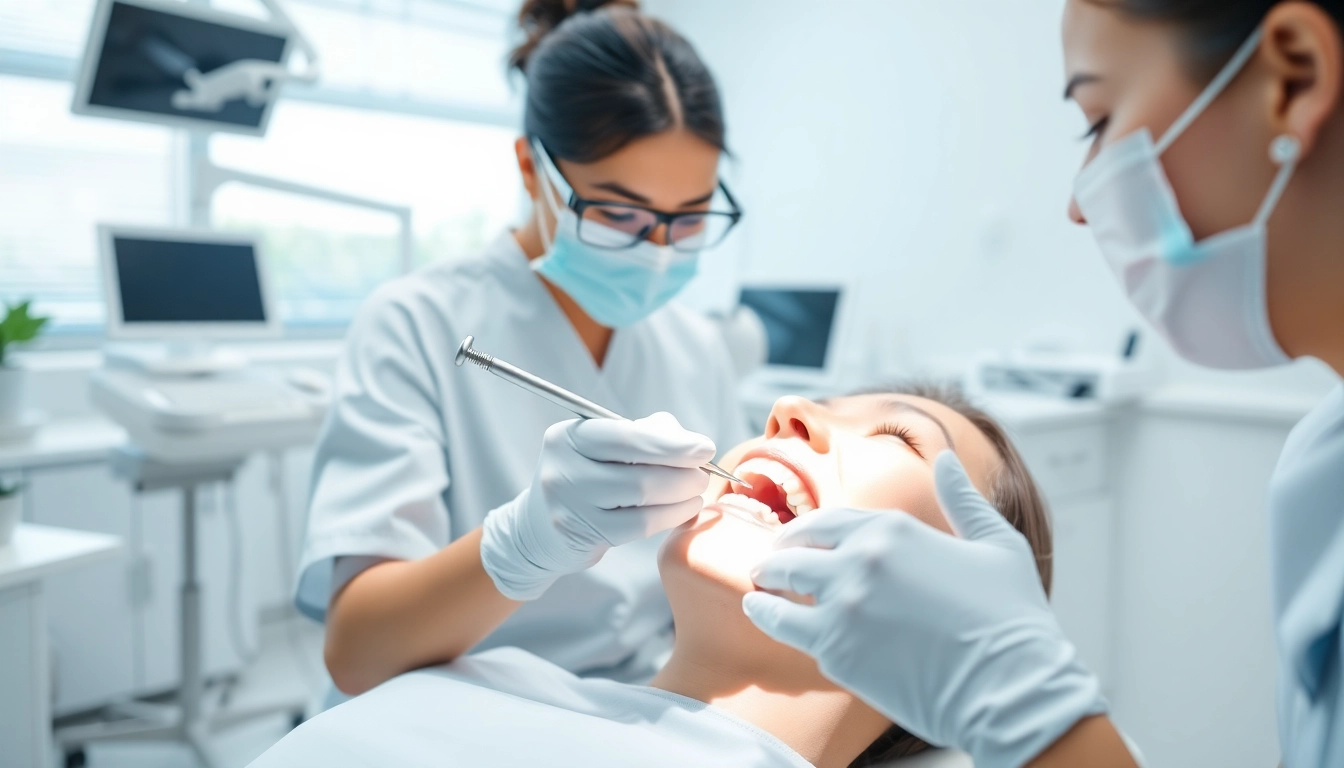What Are Dental Cleanings?
Definition and Purpose of Dental Cleanings
Dental cleanings are professional procedures performed by dental hygienists or dentists, aimed at maintaining oral hygiene and preventing dental diseases. The primary purpose of these cleanings is to remove accumulated plaque, tartar, and bacteria from the teeth and gum surfaces. While daily brushing and flossing can significantly reduce the buildup of these substances, they may not be able to reach every corner of your mouth effectively. This is particularly true for hard-to-reach areas like between teeth and below the gum line. By scheduling dental cleanings regularly, you take an active step in preserving not only your dental health but also your overall health.
Importance of Regular Dental Cleanings
Regular dental cleanings are crucial for several reasons. Firstly, they help prevent gum disease, which can lead to more severe issues such as tooth loss or further systemic diseases, including heart conditions linked to oral bacteria. Secondly, a professional cleaning ensures that your dentist can catch any potential problems early, helping to avoid costly and invasive treatments down the line. Furthermore, dental cleanings can leave your smile looking and feeling its best by polishing the teeth and removing surface stains, giving a brighter appearance.
Tools and Techniques Used in Dental Cleanings
During dental cleanings, a variety of specialized tools are employed. These include:
- Ultrasonic Scalers: These devices use high-frequency sound waves to break down tartar and plaque.
- Handheld Instruments: Dental hygienists often utilize scaling instruments, such as curettes and scalers, to manually remove deposits from the teeth.
- Polishing Tools: After scaling, a polishing tool with a rubber cup and gritty toothpaste is used to smooth the surfaces of the teeth.
These tools, combined with the expertise of a professional, result in a thorough cleaning that is more effective than at-home oral hygiene practices alone.
Types of Dental Cleanings
Standard Dental Cleanings Explained
Standard dental cleanings, often referred to as prophylaxis, are the most common type of cleaning. They typically occur every six months for individuals with good oral hygiene and no significant dental problems. During this procedure, the hygienist will remove plaque and tartar buildup through scaling, followed by polishing of the teeth.
This type of cleaning not only refreshes your mouth but also allows the dentist to check for issues such as cavities or signs of gum disease that may require further attention.
Deep Cleanings: When Are They Necessary?
Deep cleanings, also known as scaling and root planing, go beyond standard cleanings. They are necessary when gum disease is present. Unlike regular cleanings, which address visible areas of the teeth, deep cleanings target the roots beneath the gum line.
If a patient has developed periodontitis or severe gum disease, a deep cleaning will help remove tartar and bacterial buildup from the roots, promoting healthy gums. This procedure often requires local anesthesia to ensure patient comfort.
Specialized Cleanings for Gum Disease
In cases of advanced gum disease, specialized cleanings may be required. These may include:
- Periodontal Maintenance Cleanings: After undergoing treatment for periodontal disease, patients may need more frequent cleanings to maintain their oral health.
- Antimicrobial Treatments: These can be applied during deep cleanings to help reduce bacteria and inflammation in the gums.
Such specialized interventions are essential for managing chronic gum issues and preventing further deterioration.
The Dental Cleaning Process
Initial Consultation with Your Dentist
Before the cleaning process, your dentist will conduct an initial consultation that involves a thorough examination of your mouth. This might include dental X-rays to identify hidden issues and evaluate the health of your bones and teeth.
Steps Involved in a Typical Cleaning
The dental cleaning process generally involves several steps:
- Physical Exam: The hygienist checks for any problems such as signs of gum disease or cavities.
- Scaling: Using ultrasonic and manual tools, the hygienist removes plaque and tartar buildup from the teeth.
- Polishing: Following scaling, a gritty toothpaste is used alongside a polishing tool to smooth the teeth.
- Flossing: The hygienist will also floss your teeth to remove any debris left post-cleaning.
- Fluoride Treatment: In many cases, a fluoride treatment is applied to help strengthen teeth and prevent decay.
Post-Cleaning Care and Recommendations
After your dental cleaning, your dentist will provide care recommendations tailored to your specific needs. This often includes instructions on maintaining oral hygiene practices at home, such as proper brushing techniques and choosing the right products. They may also suggest specific follow-up appointments based on the state of your dental health.
Benefits of Regular Dental Cleanings
How Dental Cleanings Prevent Oral Diseases
One of the most significant benefits of regular dental cleanings is their role in preventing oral diseases. By removing plaque and tartar, these cleanings reduce the risk of cavities and gum disease, which can lead to more severe conditions if left untreated. Regular visits can help the dentist identify and address early signs of potential issues, preventing the need for more extensive treatments.
Impact on Overall Health
The mouth is intricately linked to overall health. Poor oral health can lead to several systemic conditions, including heart disease, diabetes, and respiratory infections. Regular dental cleanings help maintain oral health, which in turn supports overall physical health. Research has shown a strong correlation between periodontal disease and various systemic diseases, reinforcing the need for routine dental hygiene.
Cost-Effectiveness of Preventive Care
Investing in regular dental cleanings can save money in the long run. The costs associated with dental treatments for conditions that develop due to neglect can be significantly higher than routine maintenance. By prioritizing preventive care through regular cleanings, patients can avoid the financial burden of complex restorative treatments.
Addressing Common Concerns About Dental Cleanings
Does It Hurt? Understanding Sensitivity
A common concern among patients is whether dental cleanings are painful. While some might experience minimal discomfort, especially if they have existing gum disease, most people find the cleaning process tolerable. Dentists can offer numbing agents, as well as alternative cleaning skills and techniques to ensure comfort during the procedure.
Frequency: How Often Should You Get Cleanings?
The general recommendation is to undergo a dental cleaning at least twice a year, or every six months. However, this can vary based on individual health needs. Those with a history of gum disease or other oral health issues may require more frequent cleanings. It’s essential to consult your dentist to establish a cleaning schedule that suits your specific needs.
Myths and Misconceptions About Dental Cleanings
There are several myths surrounding dental cleanings. One of the most prevalent is the belief that they are unnecessary if one practices good oral hygiene at home. In truth, professional cleanings are a vital component of oral care, complementing home care efforts. Another myth is that cleanings are painful; as discussed earlier, they are generally manageable, and pain can often be minimized with appropriate techniques.



